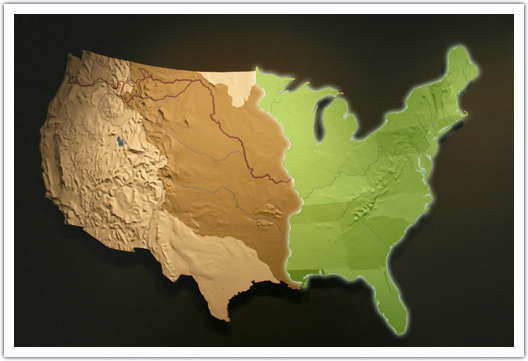The St. Louis waterfront on the America's western frontier in the 1820s.

In the 1820s, some political leaders
were infatuated by an idea known as 'national completeness.'
National Completeness argued that public domain would one day
extend from the Atlantic Seaboard to the western border of
Missouri. Once this new territory had been organized and
integrated into the national life, the nation would have reached
its limit of development. At the time, the region designated
as 'Indian Territory' had become fixed in the public mind as a
"vast inhospitable waste."
Inspite of
Jefferson's boundless imagination for empire building at the turn
of the century, by 1820 the nation's leaders could not conceive of
a United States that thrust itself beyond the Mississippi river.
John C. Calhoun recommended that President Monroe set aside
the region west of the Missouri and Arkansas as a permanent reserve
for Indians. Monroe (and his successors) agreed with
Calhoun's recommendation.
Congress sets aside a vast
tract of Indian Territory situated between the western border of
Missouri and the 100th
meridian, extending from 43' north to the Red River, in Texas.
It embraced much of the Great Plains and included most of the
lands ceded to the United States by France in the treaty with
Napoleon Bonaparte in 1803.
Related Events
Related Flashpoints